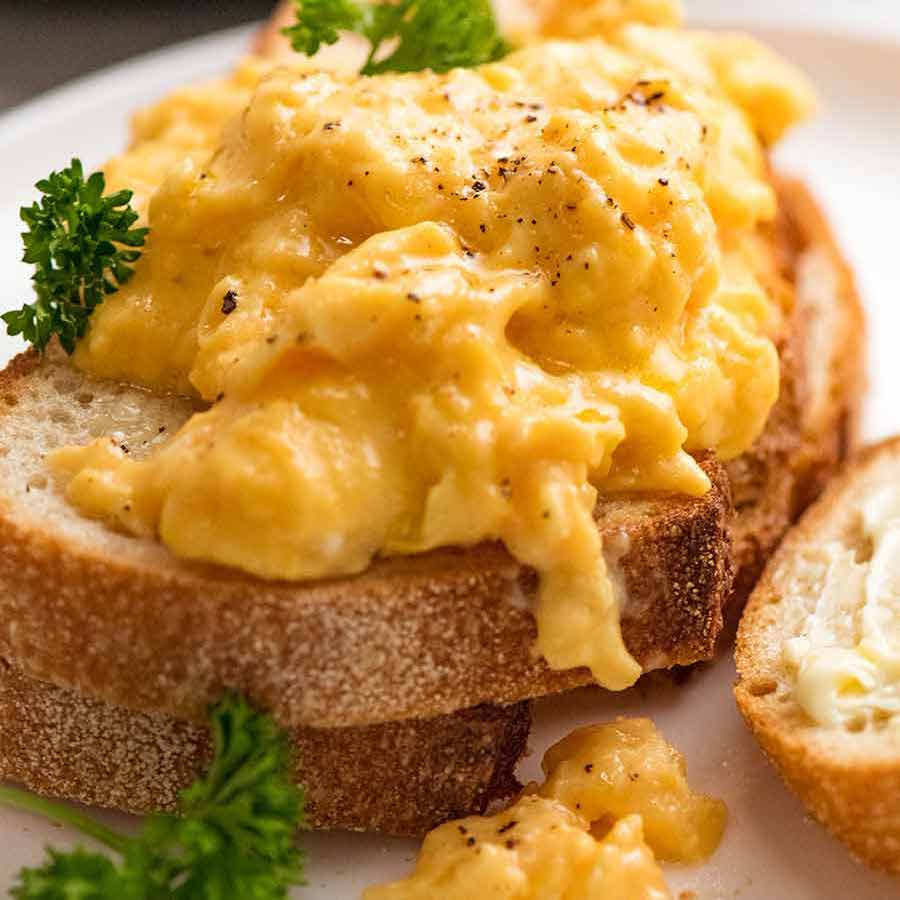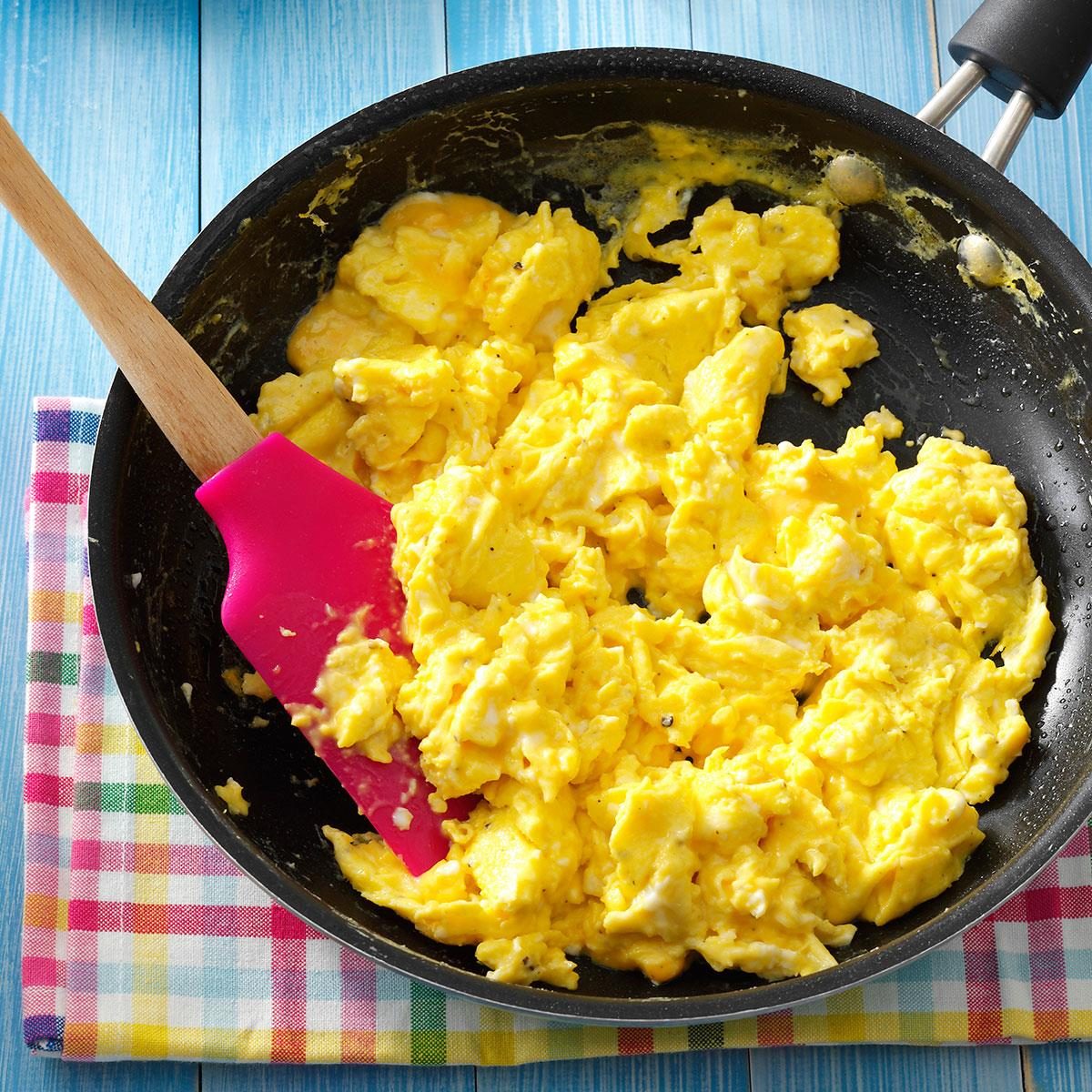How to Make Perfect Scrambled Eggs
/scrambled-eggs-58a701ac5f9b58a3c91cbebd.jpg)
Introduction
Imagine waking up to the tantalizing aroma of freshly cooked scrambled eggs, their creamy texture and rich flavor promising a perfect start to your day. Mastering the art of making the perfect scrambled eggs is a culinary skill that can elevate your breakfast game to new heights. Whether you're a seasoned chef or a kitchen novice, this guide will walk you through the essential techniques and tips to achieve the best scrambled eggs every time.
The Art of Scrambled Eggs
Understanding the Basics
Scrambled eggs might seem simple, but the devil is in the details. The key to achieving creamy scrambled eggs lies in understanding the science behind the cooking process. Eggs are primarily made up of proteins, and when heated, these proteins coagulate, transforming the liquid egg into a solid form. The trick is to control this coagulation process to achieve the perfect texture.
Ingredients: The Foundation of Success
The first step in making the perfect scrambled eggs is selecting the right ingredients. Fresh, high-quality eggs are a must. Consider using free-range or organic eggs for the best flavor. Additionally, you'll need a bit of butter or oil, a pinch of salt, and perhaps a splash of milk or cream for added richness.
The Perfect Scrambled Eggs Recipe
Step-by-Step Guide
Preparation
- Gather Your Ingredients: You'll need 4 large eggs, 2 tablespoons of butter, a pinch of salt, and 2 tablespoons of milk or cream (optional).
- Crack the Eggs: Carefully crack the eggs into a bowl, ensuring no shell fragments fall in.
- Whisk: Use a fork or whisk to beat the eggs until the yolks and whites are fully combined. Add a pinch of salt and the milk or cream, if using.
Cooking
- Heat the Pan: Place a non-stick skillet over medium-low heat. Add the butter and let it melt, swirling it around the pan to coat the bottom evenly.
- Pour the Egg Mixture: Once the butter is melted and bubbling, pour in the egg mixture.
- Stir Gently: Using a spatula, gently stir the eggs in a figure-eight motion. This helps to create small, soft curds that are characteristic of the best scrambled eggs.
- Control the Heat: Keep the heat low to prevent the eggs from cooking too quickly. The goal is to cook them slowly and evenly.
- Remove from Heat: When the eggs are almost set but still slightly runny, remove the pan from the heat. The residual heat will continue to cook the eggs to perfection.
Tips for Success
- Patience is Key: Cooking scrambled eggs over low heat might take a bit longer, but the result is worth the wait.
- Avoid Overcooking: Overcooked eggs become dry and rubbery. Remove them from the heat just before they reach your desired consistency.
- Use the Right Tools: A non-stick skillet and a silicone spatula are your best friends when it comes to making scrambled eggs.
Mastering the Scrambled Eggs Technique
The French Method
The French method, popularized by chefs like Gordon Ramsay, involves constant stirring and low heat to create ultra-creamy scrambled eggs. This technique requires a bit more time and attention but results in a luxurious texture that's hard to beat.
The American Method
The American method is quicker and involves cooking the eggs over medium heat while stirring occasionally. This results in larger curds and a slightly firmer texture, which many people prefer for its simplicity and speed.
Enhancing Your Scrambled Eggs
Add-Ins and Variations
Scrambled eggs are a versatile dish that can be enhanced with a variety of add-ins. Consider adding:
- Cheese: A sprinkle of cheddar, feta, or goat cheese can add depth and creaminess.
- Vegetables: Sautéed spinach, bell peppers, or onions can boost the nutritional content and flavor.
- Herbs and Spices: Fresh herbs like chives or parsley, or spices like paprika or black pepper, can elevate the taste.
Presentation Matters
Presentation is as important as taste. Serve your scrambled eggs with a side of toast, fresh fruit, or a sprinkle of fresh herbs. A beautifully plated dish can make your breakfast feel extra special.
Conclusion
Making the perfect scrambled eggs is a culinary journey that combines science, art, and a bit of patience. By understanding the basics, selecting the right ingredients, and mastering the technique, you can elevate your breakfast game to new heights. Whether you prefer the creamy French method or the quicker American style, the key is to enjoy the process and savor the results.
FAQs
What is the best pan for making scrambled eggs? A non-stick skillet is ideal for making scrambled eggs. It ensures even heat distribution and prevents the eggs from sticking.
Can I use oil instead of butter for scrambled eggs? Yes, you can use oil instead of butter. However, butter adds a richer flavor and helps create a creamier texture.
How do I know when my scrambled eggs are done? Scrambled eggs are done when they are just set but still slightly runny. The residual heat will continue to cook them to perfection.
Can I make scrambled eggs ahead of time? Scrambled eggs are best enjoyed fresh. However, you can reheat them gently in a pan or microwave if needed.
What can I do with leftover scrambled eggs? Leftover scrambled eggs can be used in sandwiches, wraps, or even added to salads for a protein boost.


By following these tips and techniques, you'll be well on your way to mastering the art of making the perfect scrambled eggs. Happy cooking!
0 Response to "How to Make Perfect Scrambled Eggs"
Post a Comment